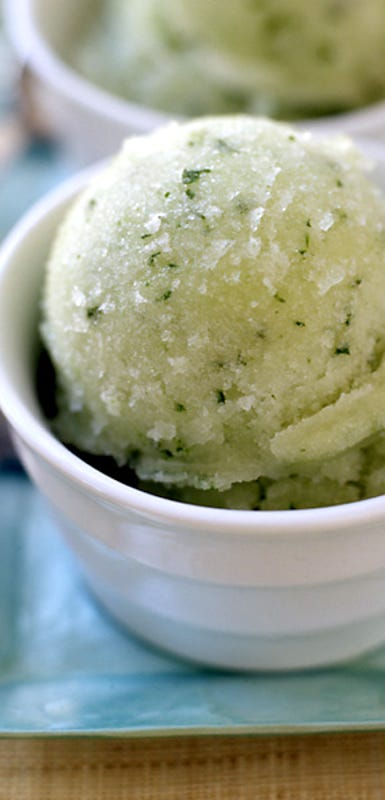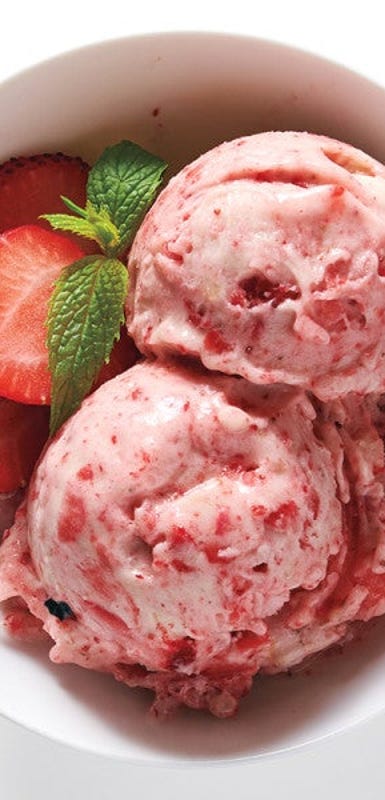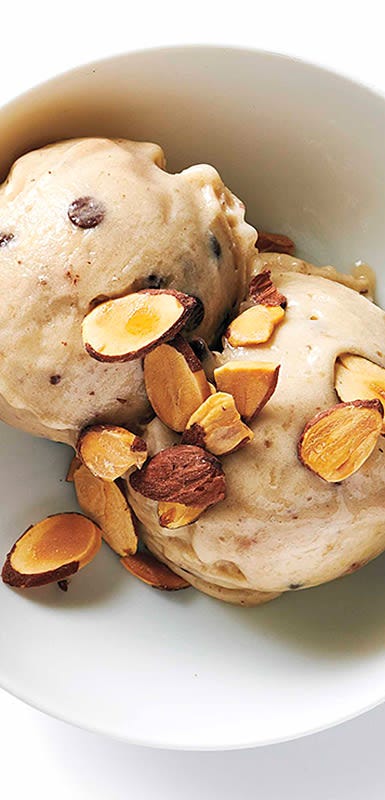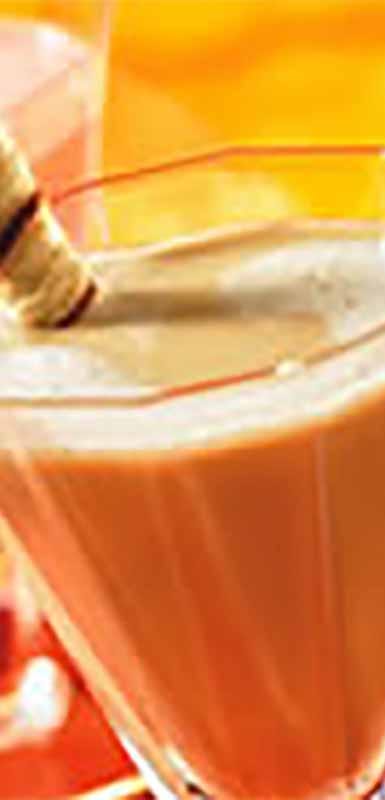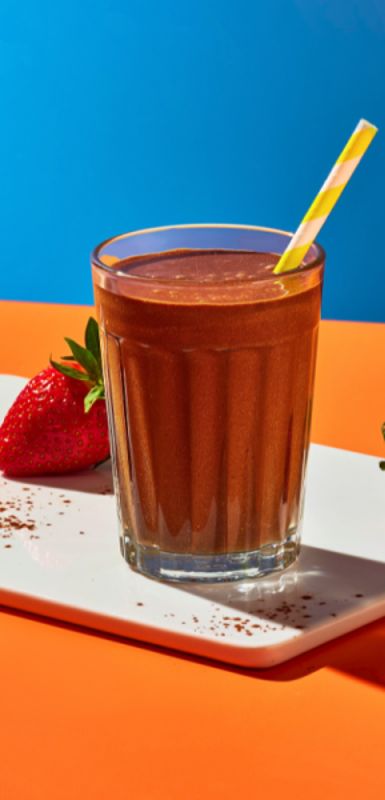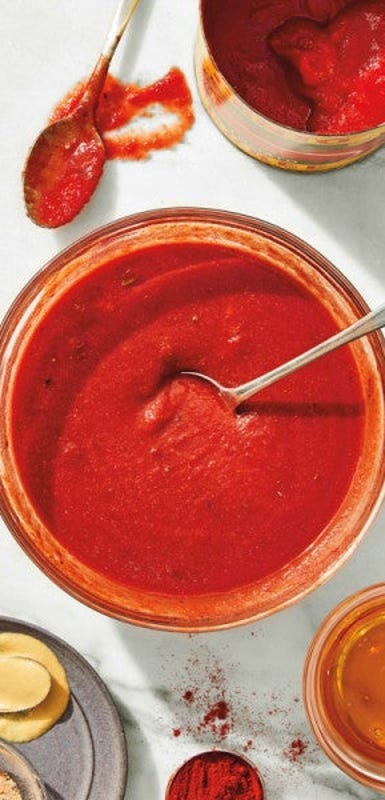Surprising ways sugar gets in your diet
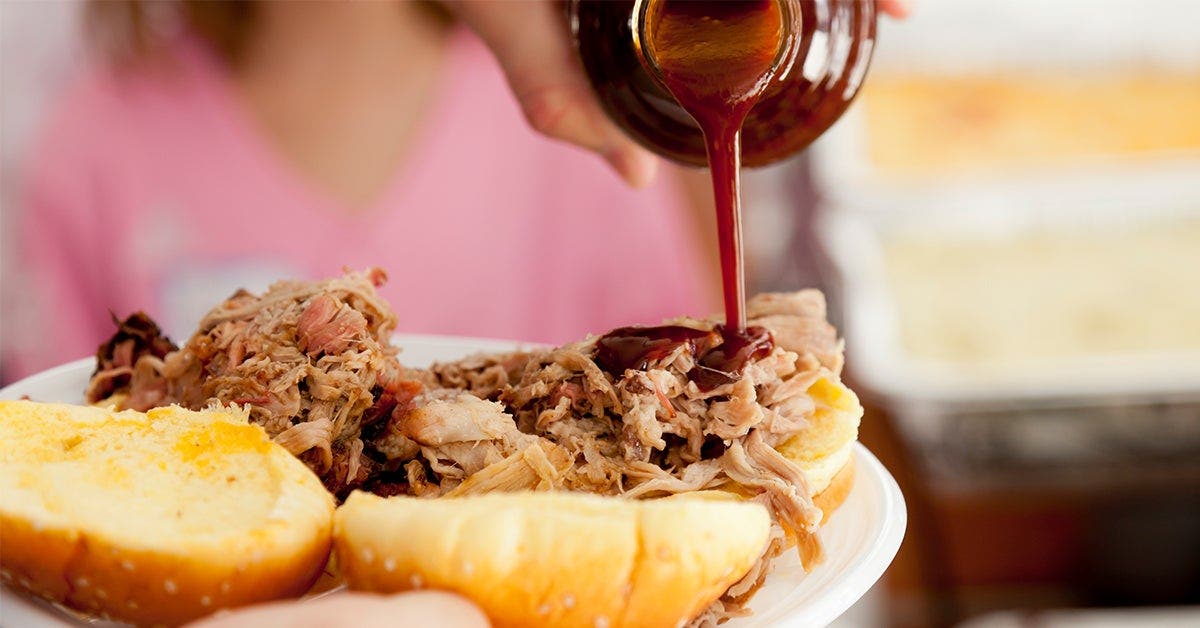
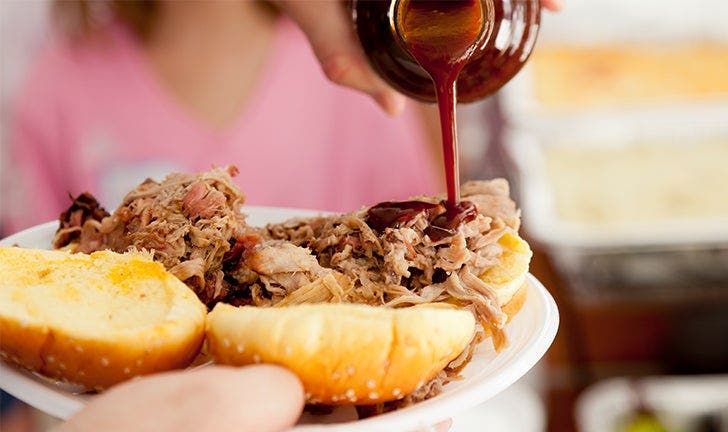
We all know that limiting sugar intake is an important part of maintaining a healthy weight and overall wellness. However, it can be trickier to do than you might think.
It’s relatively straightforward to avoid consuming sugary treats, but what we really need to watch out for are foods which appear to be healthy, but in reality, have a lot of added sugar. To truly start reducing sugar in your diet, it's crucial to know where it comes from.
Sugar consumption in Canada
A common phrase heard is, “I don't eat that much sugar.” It’s easy to say those words when you are unaware of the hidden sources of sugar in your diet. But how much sugar do Canadians actually consume?
Information from the Canadian community health survey (CCHS) shows that sugars consumed by Canadians accounts for 21% of their daily calories. While 31% of that sugar comes from fruits and vegetables (natural sugars), 35% comes from other sources such as beverages (top contributor of sugar).
Currently, Canada does not have a Dietary reference intake (DRI) for total and added sugars as part of a healthy eating pattern. However, both Health Canada and the World Health Organization (WHO) do present recommendations. Health Canada suggests consuming foods with little to no added sugars and substituting sugar-based beverages for water. The WHO strongly recommends that for both children and adults, the intake of free sugars does not exceed 10% of total calories consumed. The WHO has a further conditional recommendation of limiting the intake of added sugars to 5% or less of total calories consumed.
Both natural sugars and added sugars are digested in the same way but there are some major differences. Natural sugars are more nutrient dense whereas added sugars are calorically dense. Below we will compare the two types of dietary sugar.
Natural sugar
Natural sugar, as it sounds, is sugar that is naturally occurring in foods. Foods with natural sugars like fruits, vegetables and milk often contain other beneficial nutrients, such as vitamins, minerals, fibre, and protein.
Natural sugars will be seen on labels in the following forms:
- fructose and glucose - found in fresh and dried fruit/vegetables
- lactose and maltose - found in dairy products. The main watchout is fruit yogurts, which could be sweetened with high fructose corn syrup (added sugar)
Added sugar
Added sugar, also known as “free sugar” has been added to foods and beverages in either processing or preparation ( ie. adding sugar to your coffee). Foods high in added sugar don’t typically provide much nutritional value. Added sugar can also be found in foods that aren’t always considered sweet such as salad dressings, crackers, fruit yogurt, bread, refined grains, dressings, and cereals.
Added sugar goes by many names, and can be seen on labels as the following:
- white sugar, beet sugar, raw sugar, brown sugar, cane sugar, malt sugar, invert sugar
- agave syrup, honey, maple syrup, corn syrup, malt syrup, barley malt extract or fancy molasses
- glucose-fructose (also known as high fructose corn syrup), maltose, sucrose, dextrose
- fruit juice concentrates and purée concentrates
- evaporated cane juice, cane crystals
Hint: words ending in “ose” are typically referring to a sugar
Sugar substitutes, regulated by Health Canada, can also be found on the ingredient list as one of the following names:
- xylitol
- lactitol
- isomalt
- mannitol
- erythritol
- saccharin
- aspartame
- sorbitol and sorbitol syrup
- maltitol and maltitol syrup
- stevia extract and steviol glycosides
Hint: words ending in “ol” are typically referring to a sugar alcohol
How sugar is displayed on labels in Canada
Truthfully, it can be tricky to know how much added sugar a product has as you won't find added sugars on the Nutrition Facts label. The listing for sugar includes both natural and added sugars. However, new food labelling regulations, aiming to help understand the sugar content of the food, will be implemented at the end of 2022.
The way sugar is currently displayed on labels can be seen below.
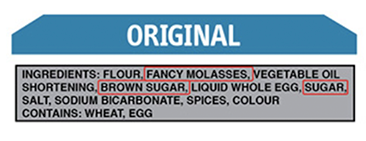 The new way of labelling sugars can be seen here. Sugars will now be grouped by weight and in descending order after the name ‘sugar.’ This will add more visibility into the types of the added sugars and how they are presented in comparison to the other ingredients.
The new way of labelling sugars can be seen here. Sugars will now be grouped by weight and in descending order after the name ‘sugar.’ This will add more visibility into the types of the added sugars and how they are presented in comparison to the other ingredients. 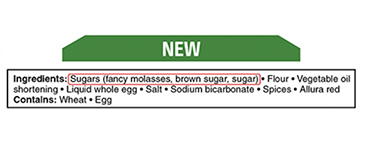 Sources of sugar
Sources of sugar
Unless you consume only raw, natural foods you are bound to have added sugars in your diet. We will break down some of the most common sources as well as some sneaky ones you might not know.
Sugary drinks are the most common source of sugars in the Canadian diet.
This includes:
- soft drinks
- sport drinks
- energy drinks
- flavoured milks
- 100% fruit juice
- fruit-flavoured drinks
- flavoured plant-based beverages
- flavoured waters with added sugars
- other sweetened hot or cold beverages
Other common sources of sugar include:
- Packaged foods
- Breakfast cereals
- Condiments
- Candy and chocolate bars
- Jams, jellies, and preserves
- Pudding
- ice cream
- Cakes
- Donuts
- Cookies
- Pastries
Many of these might seem pretty obvious, however sugar can still be sneaking into your diet from other places.
5 sneaky sugar sources:
1. Breakfast cereals and granola bars
While it might seem obvious that frosted cereals and chocolate covered granola bars are high in sugar, it might not be as clear for other “healthier” looking options. Granola-based cereals can have up to 15 grams of refined sugar in less than a cup. For comparison, that's the same as eating 3 teaspoons of sugar.
Granola bars can be even higher with up to 25 grams in a small bar. With that amount of sugar it’s the same as eating a chocolate bar.
Here are some other examples of seemingly healthy cereals and granola that contain higher amounts of sugar than expected:
- All bran buds: ⅓ cup = 8g sugar
- General Mills oatmeal almond crisp: 1 cup = 13g sugar
- Vector granola: ½ cup = 10g sugar
- Harvest crunch granola: ⅔ cup = 10g sugar
2. Pasta sauces
Store bought pasta sauces can contain much more sugar than you would imagine, considering their savoury flavours. Some jarred sauces have between 6 and 12 grams of sugar per half-cup serving. Here are some examples of common Canadian pasta sauces and their sugar content:
- Classico four cheese pasta sauce: ½ cup = 5g
- Classico tomato alfredo pasta Sauce: ½ cup = 6g
- Catelli country mushroom pasta sauce: ½ cup= 6g
- Cirio napoletan original pasta sauce: ½ cup = 7g
Consider making your own sauce in order to monitor the sugar content, plus homemade sauces taste delicious!
3. Condiments and sauces
While there is no doubt that adding barbecue or teriyaki sauce to your meat will add some serious flavour, you are also potentially adding a lot of sugar. Similarly, adding ketchup, relish, and other flavoured condiments can bump up the sugar content of a meal as well.
In some sauces, sugars can account for up to 80 per cent of the calories. It’s common for a 2 Tbsp serving of barbecue sauce to have around 12g of sugar. In addition, ketchup can have around 8g of sugar for a 2 Tbsp serving. Here are some common Canadian sauces and condiments and their sugar content:
- Heinz ketchup: 1 Tbsp = 4g sugar
- Relish: 1 tbsp = 3g sugar
- Bull's-Eye bold original BBQ sauce: 2 Tbsp = 12g
- Kraft BBQ Sauce, Original: 2 Tbsp = 7g
- Diana Sauce Original: 2 Tbsp = 11g
4. Salad Dressing
Not all salad dressings contain a lot of sugar. However, if you are a fan of sweet dressing like Catalina, Russian, French, and poppy seed you might need to be more aware of your serving size. Even fruity vinaigrette varieties like raspberry or pomegranate can have a lot of added sugar as well, some can rack up 8g of sugar for a 2 tbsp serving. Here are some common dressings that have a higher sugar content:
- Kraft raspberry vinaigrette dressing: 2 Tbsp = 6g
- Kraft Russian Dressing: 2 Tbsp = 10g
- Kraft Poppy Seed Calorie Wise Salad Dressing: 2 Tbsp = 6g
There are plenty of salad dressings available at the grocery store that do not have a lot of sugar, just be sure to check the label before purchasing. Alternatively, it’s easy to make a simple oil and vinegar dressing from home as well.
5.Dried fruit
Dried fruit has much more sugar by volume than fresh fruits. Adding a ¼ cup of dried cranberries or raisins to a meal could potentially add around 25g of sugar!
You might be thinking, but it’s fruit so it must be natural sugar? Well there is often sugar added for preservatives and for taste. For reference, a full cup of fresh cranberries has just 4 grams of natural sugar. In comparison, a ¼ cup serving of Ocean Spray dried cranberries contains a whopping 29g of sugar! This is due to the fact that cranberries are naturally tart and need the sugar to be more palatable.
Cranberries are not the only culprit though, other dried fruit like apricots can also rack up close to 30g of sugar for a ⅓ cup serving.
The big picture
You might not see the harm in a few extra grams of sugar here and there, but excess consumption of sugar can have some detrimental effects on the human body over time.
Excess sugar consumption can translate into excess calorie consumption, which can lead to carrying excess weight which can increase your risk for conditions such as type 2 diabetes, some forms of cancer, and cardiovascular disease.
Health Canada recommends a healthy diet where most sugars come from fruit, vegetables, and unsweetened dairy products such as plain milk or yogurt. Avoiding processed foods and making as much food from scratch as possible is another tactic to avoid excess sugar consumption. Overall, we know it can be tricky to avoid added sugars but staying informed and reading labels before purchasing food is a great way to be aware of hidden sugar.
We have included some recipes that either contain no added sugar or the total sugar is considerably less than store-bought options. As an example, two WW chocolate chip cookies contain 6 g of sugar whereas a store-bought equivalent can contain 11g.

